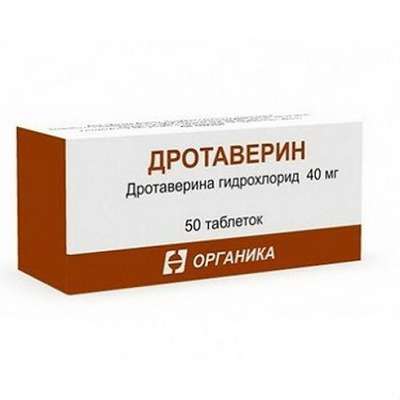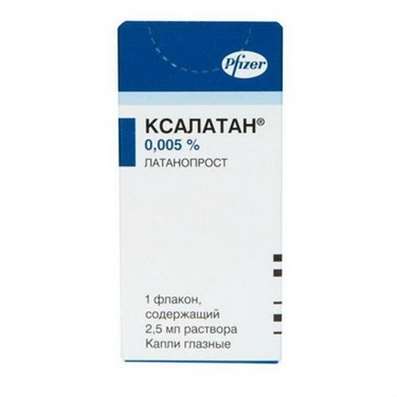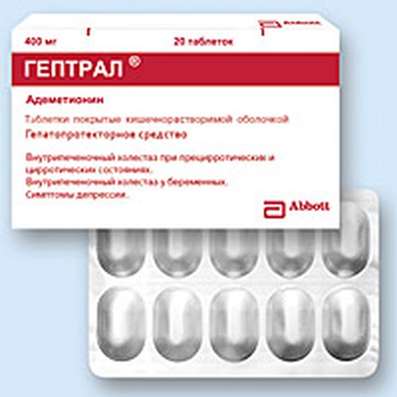Instruction for use: Cassadan 0,5
I want this, give me price
Trade name of the drug – Cassadan 0,5
Active substance: Alprazolam (Alprazolamum)
Dosage Form: Tablets
Composition: 1 tablet contains alprazolam 0.25 or 0.5 mg, in multiples of 10, 20 and 50 units.
Pharmacotherapeutic group:
Anxiolytic (tranquilizer)
ATX Code
N05BA12 Alprazolam
The nosological classification (ICD-10)
F29 Unspecified Inorganic psychosis: Hallucinatory-delusional disorders; Hallucinatory-delusional syndrome; Substance-induced psychosis; Manic-delusional disorders; Manic chronic psychosis; Manic psychosis; Acute psychosis; Paranoid psychosis; Paranoid psychosis; Subacute psychosis; Presenile psychosis; Psychosis; Psychosis intoxication; Paranoid psychosis; Psychosis in children; Psychosis childhood; Psychomotor agitation in psychosis; Reactive psychoses; Chronic psychoses; Chronic hallucinatory psychosis; Chronic psychosis; Chronic psychotic disorder; Schizophrenic psychosis.
F32 Depressive episode: Adynamic subdepression; Adynamic asthenic-subdepressive state; Asthenic-depressive disorder; Asthenic-depressive state; Astenodepressivnyh disorder; Astenodepressivnyh state;
Major depressive disorder; apatic depression with inhibition; Double depression; Depressive pseudodementia; Depressive disorder; Depressed mood disorder; Depressive disorder; Depressed mood disorder; Depressive state; Depressive disorders; The depressive syndrome; Depressive syndrome larvirovanny; Depressive syndrome with psychosis; Depression masked; Depression; exhaustion Depression; Depression with events sunk within cyclothymia; Depression smiling; Involutionary depression; Involutionary melancholy; Involutional depression; Manic-depressive disorder; Masked depression; Melancholic attack; Neurotic depression; Neurotic depression; Shallow depression;
Organic depression; Organic depressive syndrome; Simple depression; Simple melancholic syndrome; Psychogenic depression; Reactive depression; Reactive depression is a moderately severe psychopathological symptoms; Reactive depression; Reactive depression; Recurrent depression; Seasonal depressive syndrome; Senestopatic depression; Senile depression; Senile depression; Symptomatic depression; Somatogenic depression; Cyclothymic depression; Exogenous depression; Endogenous depression; Endogenous depression; Endogenous depression; The endogenous depressive syndrome.
F40 Phobic anxiety disorders: Obsessive fears; Anxiety neurosis; anxiety neurosis; Night terrors; Acute Anxiety Disorder; Syndrome of paroxysmal fear; state of fear; Fear; Phobias; phobic disorders; Phobia; Feeling of fear.
F41 Other anxiety disorders: Anxiety Relief; Nonpsychotic anxiety disorders; An alarm condition; Anxiety; Disturbingly suspicious condition; Chronic anxiety; Sense of anxiety.
F41.2 Mixed anxiety and depressive disorder: Depression with anxiety and depressive components; Mixed anxiety-depressive states; Anxious depression; Anxious, depressed mood; Anxiety and depression; Anxiety-depressive syndrome; Anxious-neurotic state.
F44 Dissociative [conversion] disorders: Dissociative phenomena; Conversion disorder; Conversion symptoms; pseudodementia; Psychogenic psychosis.
F48 Other neurotic disorders: Neurosis; Neurological diseases; Neurotic disorders; Neurotic state; Psychoneurosis; Anxious-neurotic state; Chronic neurotic disorders; Emotional reactive disorder.
Pharmacological PropertiesPharmachologic effect
Pharmacological Effects - antidepressive, anxiolytic. Tranquilizer from the group of benzodiazepines. It reduces anxiety, causing muscle relaxation, has anticonvulsant activity, a mild sedative effect. Under the influence of the drug shortens the sleep period, with an increase in sleep duration, reduced the number of nighttime awakenings. It does not cause changes in the cardiovascular and respiratory systems.
Pharmacokinetics
After oral administration, Alprazolam is rapidly and completely absorbed from the gastrointestinal tract. Cmax plasma levels reached within 2.1 hours. Binding to plasma proteins is 80%. It is metabolized in the liver. T1 / 2 is an average of 12-15 hours. Alprazolam and its metabolites are excreted primarily by the kidneys.
Indications for Cassadan 0,5A state of fear, anxiety; neurotic or reactive depression; maintenance treatment of endogenous psychoses, mainly anxiety and agitated depression.
Contraindications for Cassadan 0,5
Hypersensitivity, male, acute angle-closure glaucoma, acute intoxication with alcohol, painkillers, sleeping pills and psychotropic drugs, pregnancy, lactation, age (under 18 years).
Cassadan 0,5 Dosage and Administration
It assessed individually and correct during treatment, depending on the achieved effect and tolerability. Dose increases carefully, first in the evening, and then in the daily intake. Most patents, not previously treated with psychotropic drugs, effective lower doses than the ball consuming antidepressants, minor tranquilizers, as well as in chronic alcoholics. It is recommended to use the lowest effective doses.
In state of anxiety and anxiety administered in an initial dose of 0.25-0.5 mg three times a day; the average maintenance dose - 0.5-4.0 mg / day in 3 divided doses. When depression initial dose - 0.5 mg 3 times per day; possible gradual increase in dose to 1,5-4.0 mg / day. Elderly or debilitated patients should receive 0.25 mg 2-3 times a day; with good tolerability may increase the dose. Upon termination of therapy, the dose should be reduced gradually, no more than 0.5 mg in 3 days. Some patients may need even slower elimination of the drug.
Side effect of Cassadan 0,5
Fatigue, dizziness, impaired motor coordination, muscle weakness, headaches, depression, insomnia, nervousness, fearfulness, jitter, anterograde amnesia, vegetative disorders, agitation, irritability, confusion, hallucinations, disturbances of the right attitude to the environment, articulation disorders, paradoxical reactions, anorexia, nausea, diarrhea, abnormal liver function, jaundice, respiratory depression, a slight decrease in blood pressure, increased salivation, changes in body weight, menstrual irregularities, changes in libido, urinary incontinence, increased intraocular pressure, dermatitis.
Cassadan 0,5at Pregnancy and breast-feeding
Alprazolam has a toxic effect on the fetus and increase the risk of birth defects when used in the I trimester of pregnancy. The constant use during pregnancy may lead to physical dependence with the development of withdrawal symptoms in the newborn. Reception at therapeutic doses in later stages of pregnancy can cause depression of the central nervous system of the newborn. Application just before birth or during labor may cause neonatal respiratory depression, decreased muscle tone, hypotension, hypothermia and a weak act of sucking (suckling newborn flaccid syndrome).
Perhaps the selection of benzodiazepines in breast milk, which can cause drowsiness in the newborn and hamper feeding.
In experimental studies have shown that alprazolam and its metabolites are excreted in breast milk.
Application of Cassadan 0,5 at violations of liver function
Caution should be used alprazolam in patients with impaired hepatic function.
Application of Cassadan 0,5 at violations of renal function
Caution should be used alprazolam in patients with impaired renal function.
Use of the drug in children
Contraindications: children and teens up to 18 years.
Use in elderly patients
For elderly or infirm patients the initial dose of 250 mg 2-3 times / day maintenance dose - 500-750 mg / day, taking into account the tolerance dose can be increased if necessary.
Cautions when taking the drug Cassadan 0,5
Must not be used concurrently with other drugs sedative. Patients taking alprazolam, must refrain from all activities that require attention, rapid physical and mental reactions. The efficacy and safety of the drug in patients younger than 18 years have not been established.
Overdose
Symptoms: drowsiness, confusion, decreased coordination, decreased reflexes, coma.
Treatment: No specific antidote is recommended gastric lavage and supportive therapy.
Interaction
Potentiates the effect of muscle relaxants and psychotropic drugs; incompatible with alcohol. Cimetidine and macrolides antibiotics, increase in serum concentration. The combined application was an increase in the levels of imipramine and desipramine serum 1/3.
SPECIAL INSTRUCTIONS
The reception should be stopped gradually, slowly reducing the dose: abrupt withdrawal may be accompanied by withdrawal symptoms (anxiety and fear). Be wary appoint people who work with machines or drivers of vehicles (slows down the reaction rate and reduces the concentration of attention). It is recommended to refrain from drinking alcohol. Nursing mothers at the time of treatment should stop breastfeeding.
Storage conditions
In a dry place at room temperature.
Keep out of the reach of children.
Shelf life
3 years. Do not use beyond the expiration date printed on the package.
Conditions of supply of pharmacies
On prescription.

 Cart
Cart





